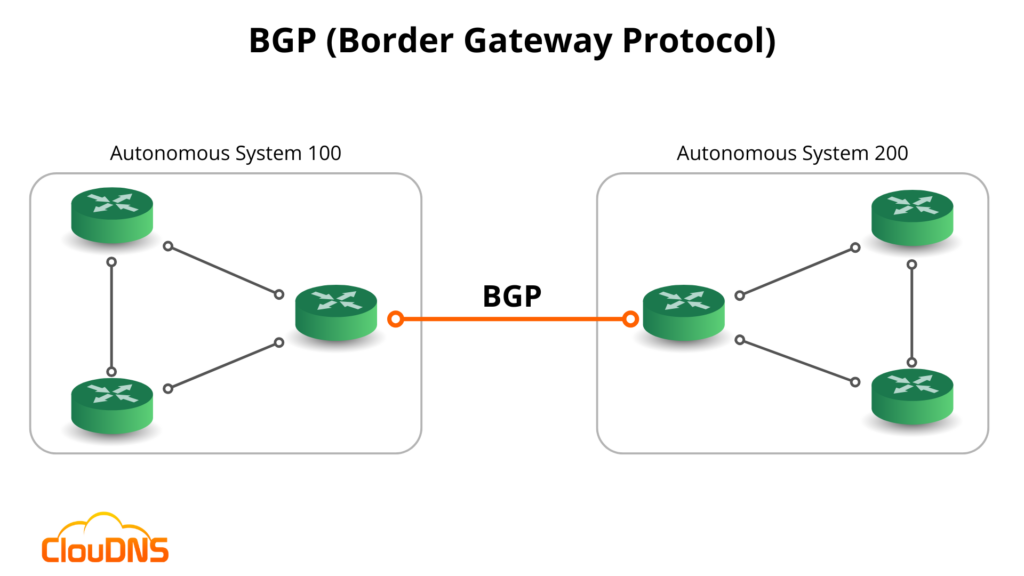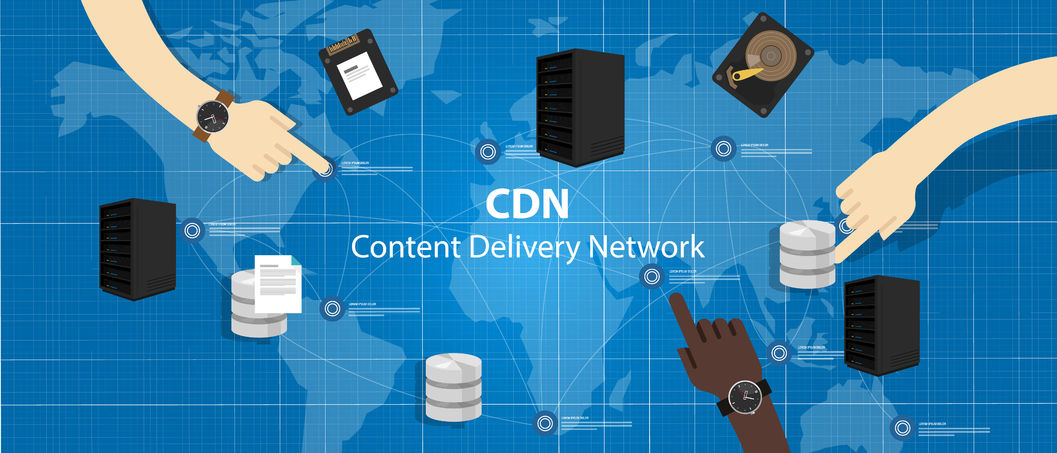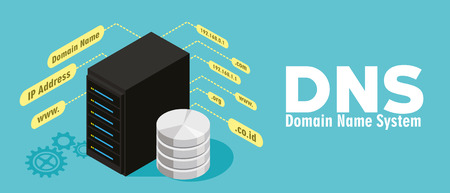Border Gateway Protocol (BGP) plays a crucial role in directing data between different networks. If you’re new to the topic, understanding this protocol might seem daunting at first. However, with the right guidance, you can grasp its fundamentals and appreciate its significance in ensuring efficient internet connectivity. In today’s article, we will walk you through everything you need to know about Border Gateway Protocol, from its basic concepts to how it interacts with DNS and common issues you might encounter. So, let’s begin!
Table of Contents
What is BGP?
BGP (Border Gateway Protocol) is the protocol responsible for routing data between different networks on the Internet. Think of BGP as the postal service of the Internet—just as the postal service decides the best route to deliver mail, it determines the most efficient path for data to travel across the web. It’s the protocol that enables different networks, or Autonomous Systems (AS), to communicate and share routing information, ensuring that data packets reach their intended destination.

The History and Evolution of BGP
It’s kind of amazing that a protocol built in the late ’80s still holds up the Internet today, but that’s exactly what BGP (Border Gateway Protocol) does. Engineers introduced it back in 1989 to replace the older Exterior Gateway Protocol (EGP), which couldn’t keep up with the Internet’s massive growth. BGP gave networks a smarter, more scalable way to communicate.
The version we use today, BGP-4, became the standard in the 1990s. It introduced some key improvements like CIDR (Classless Inter-Domain Routing), which helped reduce the size of global routing tables and made routing more efficient. Since then, developers have developed BGP to support IPv6, VPN routing, traffic engineering, and advanced features like Anycast DNS.
What always stands out is BGP’s flexibility and resilience. Even after more than 30 years, it continues to serve as the foundation routing protocol of the Internet. Engineers have patched, extended, and upgraded it many times, but its core design remains solid.
The Importance of BGP in Internet Architecture
Border Gateway Protocol plays a crucial role in determining the best possible route for data to travel across different autonomous systems (AS). An autonomous system is essentially a collection of IP networks and routers under the control of a single organization that presents a common routing policy to the Internet. BGP is the protocol that enables different autonomous systems to communicate, making it fundamental for the seamless operation of the Internet.
Without it, the Internet as we know it would not be able to function. It prevents routing loops, ensures redundancy, and supports the scalability of the Internet by allowing the aggregation of IP prefixes. This aggregation reduces the size of the global routing table, making the Internet more manageable and efficient.
Experience Industry-Leading DNS Speed with ClouDNS!
Ready for ultra-fast DNS service? Click to register and see the difference!
How does it work?
Border Gateway Protocol operates by exchanging routing information between different networks or Autonomous Systems (AS). Here’s a simplified step-by-step breakdown of how it works:
- Establishing Connections: BGP routers, known as BGP speakers, establish a connection with each other using TCP (Transmission Control Protocol). This connection is known as a BGP session.
- Exchanging Routing Information: Once the session is established, the BGP speakers exchange information about the networks they can reach. This information is stored in a Routing Information Base (RIB).
- Selecting the Best Path: Border Gateway Protocol doesn’t simply choose the shortest path. Instead, it uses various attributes (discussed later) to determine the most optimal path based on factors like policy, path length, and network stability.
- Report Routes: After selecting the best path, BGP speakers share this information to their peers, enabling other networks to update their routing tables.
- Routing Data: Finally, BGP uses the selected routes to direct data packets through the network, ensuring they reach their destination efficiently.
Border Gateway Protocol Attributes
Border Gateway Protocol uses various attributes to determine the best path for routing data. These attributes are critical to how BGP makes routing decisions. Some of the key attributes include:
- AS Path: This attribute lists the autonomous systems that data must pass through to reach its destination. Shorter AS paths are generally preferred because they represent fewer network hops.
- Next Hop: The next hop attribute indicates the next router that should be used to reach a destination. It’s crucial for determining the next step in the routing process and ensuring that data packets are forwarded correctly.
- Local Preference: Used mainly within an autonomous system (AS), this attribute helps determine the preferred exit point when multiple paths to the same destination exist.
- Multi-Exit Discriminator (MED): This attribute allows one AS to influence another AS’s decision on which route to take when multiple entry points exist into the same AS.
BGP Port Number
Border Gateway Protocol operates over TCP and uses port number 179. This port is critical for establishing BGP sessions between BGP routers (BGP peers) and for the exchange of routing information. The use of TCP ensures reliable BGP sessions and delivery of routing data, thanks to the built-in error checking and data retransmission capabilities. This is essential for maintaining stable and accurate routing tables across the Internet.
Types of BGP: External vs. Internal
Border Gateway Protocol comes in two primary types: External BGP (eBGP) and Internal BGP (iBGP). Understanding the difference between these two is essential for understanding how Border Gateway Protocol operates on a global scale.
- External BGP (eBGP): This type is used for communication between different Autonomous Systems. For example, if one internet service provider (ISP) needs to route traffic to another ISP, they use eBGP. The key characteristic of eBGP is that it’s designed for routing between separate networks, often owned by different organizations.
- Internal BGP (iBGP): In contrast, iBGP is used for routing within a single Autonomous System. It helps ensure that all routers within the same AS have consistent routing policies. While eBGP routes traffic between different ASes, iBGP ensures that once traffic enters an AS, it can be efficiently directed to its final destination.
BGP and DNS: How They Interact
DNS (Domain Name System) and Border Gateway Protocol might seem like separate entities, but they often intersect in the management of Internet infrastructure. Here’s how they relate:
- Anycast DNS: BGP plays a vital role in the implementation of Anycast DNS. Anycast is a routing technique where the same IP address is advertised from multiple locations. BGP directs traffic to the nearest location using its routing policies, which enhances DNS resolution speed and redundancy.
- DNS Traffic Steering: It is used to steer traffic based on network conditions, such as congestion or outages. By manipulating Border Gateway Protocol attributes like AS-Path and Local Preference, providers can influence the flow of traffic to their DNS servers, ensuring optimal performance.
- DDoS Mitigation: It is also instrumental in mitigating Distributed Denial of Service (DDoS) attacks. By redistributing traffic through BGP routing changes, DNS networks can absorb or neutralize the effects of an attack, maintaining service availability.
Common Issues and How to Resolve Them
Despite its importance, Border Gateway Protocol is not without its challenges. Network operators frequently encounter issues that can impact the stability and security of BGP routing. Here are some common issues and solutions:
- Route Leaks: A route leak occurs when prefixes intended to be advertised only within a certain scope are unintentionally advertised to the broader Internet. This can lead to poor routing or traffic hijacking. To mitigate this, implement BGP route filtering and establish clear routing policies with peers.
- BGP Hijacking: It occurs when a malicious actor falsely announces IP prefixes belonging to another network, effectively rerouting traffic. Using techniques like RPKI (Resource Public Key Infrastructure) and prefix filtering can prevent such incidents.
- BGP Convergence: Convergence refers to the process by which BGP routers agree on the best paths after a network change. Slow convergence can cause packet loss or increased latency. To improve convergence times, optimize BGP timers and ensure efficient path selection processes.
- DDoS Attacks: As mentioned earlier, Border Gateway Protocol can be used to mitigate DDoS attacks. However, without proper monitoring and rapid response strategies, these attacks can still overwhelm networks. Implementing automated DDoS detection and prevention systems is essential.
BGP vs. OSPF
BGP is often compared to another routing protocol, OSPF (Open Shortest Path First). While both are used for routing, they serve different purposes:
- BGP is primarily used for routing between autonomous systems on the internet (inter-domain routing). It is designed to handle large-scale networks and is crucial for global internet connectivity.
- OSPF is used within a single autonomous system (intra-domain routing). It is an interior gateway protocol (IGP) that quickly adapts to changes within a network, making it suitable for smaller, localized networks.
The main differences between BGP and OSPF include their scope, complexity, and the way they calculate routes. Border Gateway Protocol is more complex and scalable, while Open Shortest Path First is faster and simpler, making it ideal for internal network routing.
Conclusion
Understanding BGP is essential for anyone involved in networking, especially when dealing with large-scale networks or internet service providers. While it may seem complex at first, learning its basics can help you appreciate its role in ensuring that data travels efficiently and securely across the internet. Whether you’re troubleshooting common Border Gateway Protocol issues or comparing it with other routing protocols like OSPF, this knowledge will empower you to manage and optimize network performance effectively.






